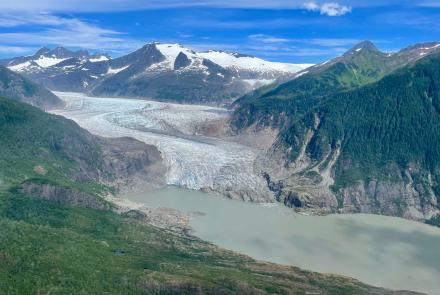Burning Peat
One estimate of Alaska's peat resource indicates that the state has enough peat to supply its total energy needs for well over 1,000 years, at the present rate of energy usage. However, as one might guess, there are a few practical problems to overcome, some of which may be so severe that the actual use of peat in the years ahead might be minor compared to other fuels.
Europeans have heated their houses with peat for centuries. Germany, Denmark and the Netherlands already have exhausted their supplies, so no longer burn peat. Ireland still obtains about a third of its needed energy by burning approximately 3.5 million tons of peat each year. The Soviet Union is the world's leading peat consumer; it gets about two percent of its energy from 70 million tons of peat burned annually. One city, Leningrad, supplies 17 percent of its electrical energy from nearby peat bogs.
One advantage of peat over coal and oil is the low sulfur content of peat. The burning of peat puts little sulfur into the air.
Peat has about the same energy content per unit dry weight as low grade coal and somewhat more energy than wood. Yet, like wood, peat is bulky and difficult to transport economically. This means that peat must be utilized rather close to its source.
One problem with peat is its high water content, typically 80 to 90 percent by weight. If burned without previous drying the peat does not contain enough energy to drive off the water; hence, there is a net energy loss rather than a gain. To get around this problem one must let peat dry in the sun or squeeze the water out with a mechanical press.
Yet another potential problem--one that seems to be relevant particularly to Alaskan peat--is the ash content of the material. Ash is the non-burnable part of peat deposits. One source of ash is mineral soil carried into a peat deposit by water flowing through it during formation of the peat bog. Another source is wind-blown soil intermixed with the moss and grasses which eventually decompose into peat. Yet a third source is volcanic ash laid down over the few thousands of years it has taken to develop existing peat bogs.
If the peat taken from a bog contains more than 25 percent ash (dry weight), current engineering practice is to not even call the deposit peat. By this criterion it appears that many of Alaska's peat bogs will not produce peat. A peat sampling program recently completed in southern Alaska, mainly in the Cook Inlet area, resulted in many samples that would not qualify as peat because of the ash content. In fact, approximately half the samples taken showed ash content greater than 25 percent.
The difficulty with high ash content is that it lowers the energy content of the peat, since, of course, the ash contains no usable energy. The ash also makes burning of the peat difficult because it clogs up devices in which peat is burned and reduces their efficiency.
The source of the ash in the Alaskan peat sampled so far is uncertain. An important contributor may well be the array of volcanoes on the Alaska Peninsula and the Aleutian Islands. Over the 10,000 to 15,000 years it has taken the Alaskan peat to form, these volcanoes probably have spread many light layers of ash over downwind peat bogs.



